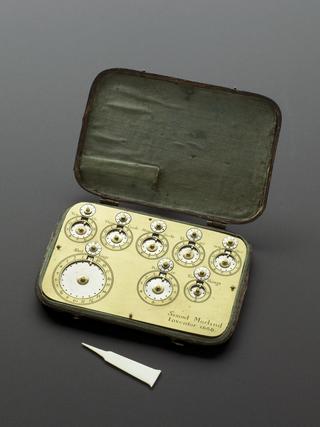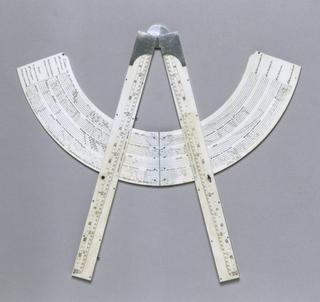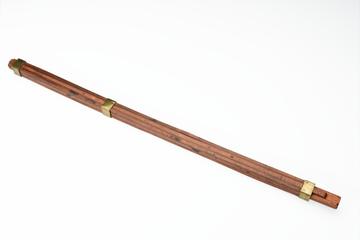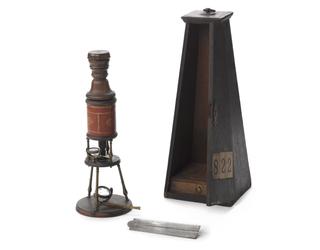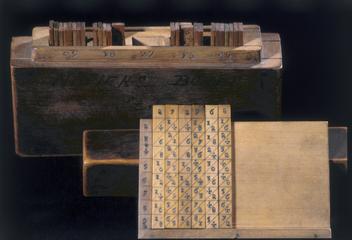
Sympalmograph in fitted box
- Made:
- c. 1877 in London
- maker:
- John Browning
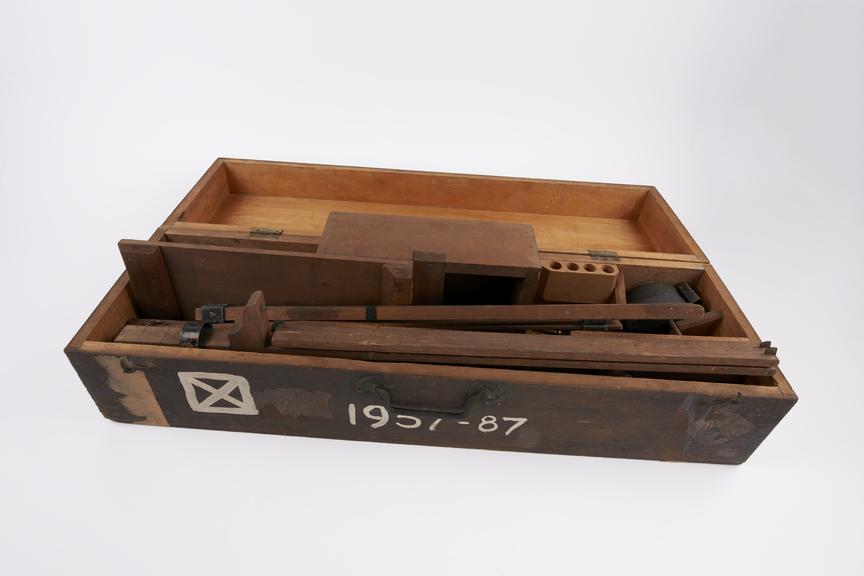
Sympalmograph in fitted box, a form of harmonograph made by John Browning, London
A simplification of the harmonograph, the sympalmograph sold by Browning in London was a drawing machine for illustrating the composition of two simple harmonic motions at right angles.
As the maker noted in the accompanying pamphlet (‘A Pamphlet on the Sympalmograph and Lissajous Curves’) the symphalmograph was intended for sale to a ‘scientific general public’ in a more reasonable price (3 £ 10 s. including case) but ‘not the less efficient’ compared to other similar devices for visualising vibrations. A thorough description of the device was published in the article ‘‘The Sympalmograph’ by Charles E. Benham in Engineering in 1895.
Lissajous curves, the type of curves that this device would draw, are named after French mathematician Jules Lissajous who developed an optical method for studying vibrations that produce harmonic sounds in 1850s. He initially studied the waves produced by a tuning fork in contact with water and the ripples that were caused and went on to look at acoustic vibrations by reflecting a light beam from a mirror attached to a vibrating object onto a screen.
Details
- Category:
- Mathematics
- Object Number:
- 1957-87
- type:
- drawing machines and harmonograph
- credit:
- Miss A.M. Bidder

